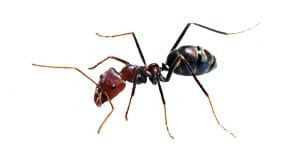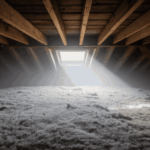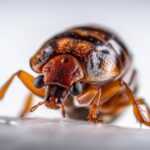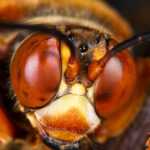nts are one of the most common insects that humans deal with around the world. They live on every continent with the sole exception of Antarctica. Of course, that means you can also find ants in Seattle and all over Washington State. Ants are very prevalent in most areas of this state. However, they start being a problem when they come inside. Our homes and businesses make fantastic places for ants to seek food and get out of the weather.
Whether you see ants inside your home or outside of it, be on the lookout for the following five ant types. These ants are considered invasive ant species and can pose significant threats to the local ecosystem. We’ll go over what each one is, how to try to eliminate them, and also when it’s time to call for professional help. Additionally, be aware of imported fire ants, which are highly invasive and aggressive pests not yet found in Utah but have the potential to establish colonies in suitable areas of southern Utah.
Common Ant Species in Western Washington
Western Washington is home to a diverse range of ant species, each with unique characteristics and habits. Knowing which ants you’re dealing with can help you address any issues more effectively. Here are some of the most common ant species you might encounter: Ant infestations can become a significant problem if not managed properly.
- European Fire Ants (Myrmica rubra): Recognizable by their reddish-brown color, these ants are notorious for their painful sting. While they are less aggressive than their southern counterparts, they can still pose a significant problem, especially for children and pets.
- Carpenter Ants (Camponotus spp.): These large, black ants are known for their ability to tunnel through wood, causing significant structural damage over time. They don’t eat the wood but use it to build their nests, often indicating underlying moisture issues.
- Velvety Tree Ants (Liometopum occidentale): With their distinctive velvety appearance, these ants are aggressive and can deliver painful bites. They typically nest in deadwood but can invade homes, especially if there’s another insect problem providing them with food.
- Pavement Ants (Tetramorium caespitum): Small and dark-colored, pavement ants often nest in cracks and crevices in pavement and concrete. While they are generally just a nuisance, they can enter homes in search of food, contaminating it in the process.
- Odorous House Ants (Tapinoma sessile): Also known as “sugar ants,” these small, brown ants are common household pests. They emit an unpleasant odor when crushed and are often found around sweet foods in kitchens and bathrooms.
European Fire Ants
When you think of fire ants, you probably think of hot climates. They’re all over states like Florida, Texas, and California. Fire ants are aptly named because they have a potent sting. Colloquially, people talk about these stings as “bites,” even though that’s not technically accurate. The red imported fire ant, originating from South America, is known to be more aggressive than the European variety.
These stings pack a powerful punch. Typically, each “bite” results in a raised welt that becomes a white pustule. Naturally, if you get stung by more than one ant, you’ll get multiple of these. Deaths are rare but can occur, usually due to anaphylactic shock.
Fortunately, the European variety tends to be less aggressive than other species found in warmer climates. They are near Seattle as their first introduction to this region was near Lake Washington. Even though they’re not as aggressive, an infestation still has the potential to become a problem – especially if you have young children or pets who may not understand the danger that these ants pose. Baited ant traps usually work best with this type of ant, but, because of the possibility of a sting, the best solution is often to contact a pest control company. The professionals can identify precisely where the colony is and how to eliminate it best. Effective ant control methods are essential to manage and prevent infestations.
Odorous House Ants – “Sugar Ants”
These ants get their name from the unpleasant odor they emit if you crush them. Generally, people find these ants around the bathroom or kitchen – especially around something sweet. Due to their tendency to seek out sugary foods, you may also hear people call these ants “sugar ants.“
Unlike the European fire ant, these small insects won’t hurt you, but they are rugged insects. Queens can lay eggs with crushed abdomens. Injured workers can keep foraging for food. Colonies, once well-established, can be challenging to eradicate. Unfortunately, these ant colonies can have many thousands of ants, making the problem even more complicated.
There are a few ways to get rid of sugar ants. Throwing off their scent is one way. With soap and water, or vinegar, you can clean their trail, so they no longer know where the food is. If the ants come from outside your home, you can use a substance to block the entryway (e.g., coffee grounds). For more stubborn problems, you might consider Borax or diatomaceous earth. Both are not kid or pet-friendly, so please do not use them if you have non-adult family members.
Carpenter Ants
People often mistake these ants for termites. Both species will destroy wood, but an infestation of carpenter ants is an entirely different problem than an infestation of termites. Most of the time, these ants live in the forest and help decompose deadwood. Like termites, in that capacity, they are incredibly helpful creatures. Ant problems caused by carpenter ants can be significant if they invade your home.
The problem is that, like termites, they can mistake your home for a fallen tree. As such, they’ll establish satellite colonies around your home. Fortunately, unlike termites, carpenter ants don’t eat the wood in your home. They merely build their nests in it. It’s still damaging to the structure, but the damage takes much longer than with termites. Since damp wood attracts carpenter ants the most, the presence of these ants on your property may indicate water damage.
Typically, you’re best to call a professional pest control company when it comes to carpenter ants. Even if you eliminated the one colony, there’s no guarantee there aren’t others slowly damaging your home! A professional pest company can look for indicators of damage in multiple areas and develop a plan to address all of them, thereby eliminating the problem.
Pavement Ants
Typically, the presence of pavement ants is a nuisance at best. These small ants like to nest in the cracks of pavement, hence their name. If you were ever walking outside and saw some tiny ants scurrying around your driveway, there’s a chance you saw pavement ants!
These ants don’t do anything malicious, but they can enter your home in search of food. If your food source happens to be a box of sugar or some other fruit on your countertop, they could, in theory, contaminate it.
Since pavement ants are nuisance ants, you can sometimes treat the problem by sealing up any cracks around your home through which they might enter. If possible, remove the food source and make sure everything is clean. More significant infestations may require professional assistance to ensure that the problem doesn’t reoccur. Effective ant control methods can help manage and prevent these infestations.
Velvety Tree Ants
Last but not least, homeowners in Washington State may encounter velvety tree ants. Although these ants’ names might not sound menacing, they, unfortunately, combine some of the worst traits of fire ants and carpenter ants. As the name suggests, they make their homes in the deadwood but can find their way into your home and make a nest.
What makes velvety tree ants so problematic is that they are aggressive biters that often inject poison with the bite. Some people have compared these ant bites to scorpion stings.
Unlike other ants, these insects are not in search of human food but rather other insects. Therefore, if you start noticing them in and around your home, it likely means you have another insect problem that is providing their food.
Due to the aggressive nature of these ants and the fact that they have a painful sting, if you see them around your home, call an exterminator immediately. You don’t want these ants to get too comfortable in your home!
Ant Biology and Behavior
Understanding ant biology and behavior is crucial for effective control and prevention. Ants are social insects that live in complex colonies with distinct castes and roles:
- Queen Ant: The queen is the heart of the colony, responsible for laying eggs and ensuring the colony’s survival. She can live for several years and produce thousands of offspring.
- Worker Ants: These ants are the backbone of the colony, taking on roles such as foraging for food, caring for the young, and defending the nest. They are the ants you are most likely to see.
- Communication: Ants use chemical signals, known as pheromones, to communicate and coordinate their activities. These pheromones help them navigate, find food, and alert others to danger.
Ant species identification is essential for understanding their unique behaviors and implementing targeted control strategies.
Ant Nesting and Foraging Habits
Ants are highly organized and social creatures, with complex nesting and foraging habits that can make them challenging to control:
- Nesting: Ants typically build their nests in underground colonies, with separate chambers for eggs, larvae, and pupae. Some species, like carpenter ants, prefer nesting in wood, while others, like pavement ants, nest in soil or under rocks.
- Foraging: Foraging ants use chemical trails to navigate and locate food sources. They can travel long distances from their nest to gather resources, often forming visible ant trails of ants moving back and forth.
- Attraction to Food: Ants are attracted to sweet, sticky, or protein-rich substances. This is why you often find them in kitchens, gardens, and other areas with abundant food sources. Keeping these areas clean and free of food debris can help deter them.
Ant Control and Prevention
Effective ant control and prevention require a comprehensive approach that addresses the root causes of ant infestations. Here are some practical steps you can take:
- Seal Entry Points: Inspect your home for cracks and gaps where ants might enter. Use caulk or other sealants to close these entry points and prevent ants from getting inside.
- Proper Food Storage: Keep food and trash in sealed containers to avoid attracting ants. Regularly clean your kitchen and dining areas to remove food crumbs and spills.
- Eliminate Moisture: Ants need water to survive, so fix any leaks and remove standing water around your home. Ensure that your home is well-ventilated to reduce humidity levels.
- Natural Deterrents: Use natural deterrents like cinnamon, citrus, or vinegar to repel ants. These substances can disrupt their scent trails and make your home less appealing to them.
For more severe infestations, consider professional ant extermination services to effectively eliminate ants from your home.
Identifying Ant Infestations
Identifying ant infestations early is crucial for effective control and prevention. Here are some signs to look for:
- Ant Trails: Look for trails of ants moving to and from a food source. These trails can help you locate the nest or entry point.
- Nests: Check for ant nests in common areas like kitchens, bathrooms, and near food sources. Nests can be found in soil, wood, or hidden in walls and floors.
- Discarded Wings: During certain times of the year, you might find discarded wings from reproductive ants. This is a sign that a colony is nearby.
- Inspection Tools: Use a magnifying glass or flashlight to inspect dark or hard-to-reach areas where ants might be hiding.
- Professional Help: If you suspect a significant infestation, consult a pest control professional. They can accurately identify the ant species and develop a targeted treatment plan.
By understanding the different ant species in Western Washington and their behaviors, you can take proactive steps to prevent and control infestations, ensuring your home remains ant-free.
Ant Safety and Health Concerns
Ants can pose various safety and health concerns, especially when they infest homes and buildings. While most ants are harmless, some species can cause significant problems. Here are some ant safety and health concerns to be aware of:
- Fire Ants: Fire ants, including the European fire ant, can deliver painful stings that result in raised welts and white pustules. In rare cases, these stings can lead to anaphylactic shock, which can be life-threatening. It’s crucial to be cautious around these ants, especially if you have young children or pets.
- Carpenter Ants: While carpenter ants do not sting, they can cause significant damage to structures by tunneling through wood. This can lead to costly repairs and even compromise the integrity of a building. If you notice signs of carpenter ants, it’s essential to address the issue promptly to prevent further damage.
- Velvety Tree Ants: Velvety tree ants are known for their aggressive behavior and can inject a poison when they bite. Their bites are often compared to scorpion stings and can cause significant pain and swelling. If you encounter these ants, it’s best to contact a pest control professional immediately.
- Allergic Reactions: Some people may be allergic to ant stings or bites, which can cause severe reactions. Symptoms such as difficulty breathing, rapid heartbeat, or dizziness after an ant sting or bite require immediate medical attention.
- Property Damage: Ants can cause significant damage to property, especially when they infest buildings. Carpenter ants, for example, can tunnel through wood and cause structural damage, while pavement ants can excavate and weaken the soil beneath concrete slabs.
- Food Contamination: Ants are attracted to sweet or sticky substances and can contaminate food and surfaces. This can lead to the spread of diseases and other health problems. Keeping food sealed and maintaining cleanliness can help prevent this issue.
- Native Ant Species: Invasive ant species, such as fire ants, can displace native ant species, leading to ecological imbalances and reduced biodiversity. Native ant species play a crucial role in controlling pest populations and maintaining the balance of the ecosystem.
To minimize ant safety and health concerns, it is essential to take preventative measures such as:
- Sealing entry points and cracks in buildings
- Keeping food and trash in sealed containers
- Regularly cleaning and decluttering the property
- Removing standing water and moisture sources
- Implementing ant control measures, such as baiting or spraying, when necessary
By taking these steps, you can reduce the risk of ant infestations and minimize the safety and health concerns associated with ants.
There Are Many Ants in Western Washington and the Seattle Region
Due, in part, to the abundance of water and green foliage in and around Seattle, western Washington is home to numerous types of ants, including various native ant species. These five most common ones range from dangerous (fire ants and velvety tree ants) to mostly benign (odorous house and pavement ants). Fire ants, in particular, can displace native ant species, leading to ecological imbalances and reduced biodiversity. You may wish to try treating ants that pose no threat by yourself and only call a professional if the infestation is stubborn.
However, if you have a colony of the velvety tree or fire ants, please call a pest control professional immediately. These ants pose a health hazard and are challenging to eliminate. Fortunately, a trained professional can terminate these pests once and for all! Consider seeking ant control services to ensure your home remains ant-free.
"*" indicates required fields
"*" indicates required fields




